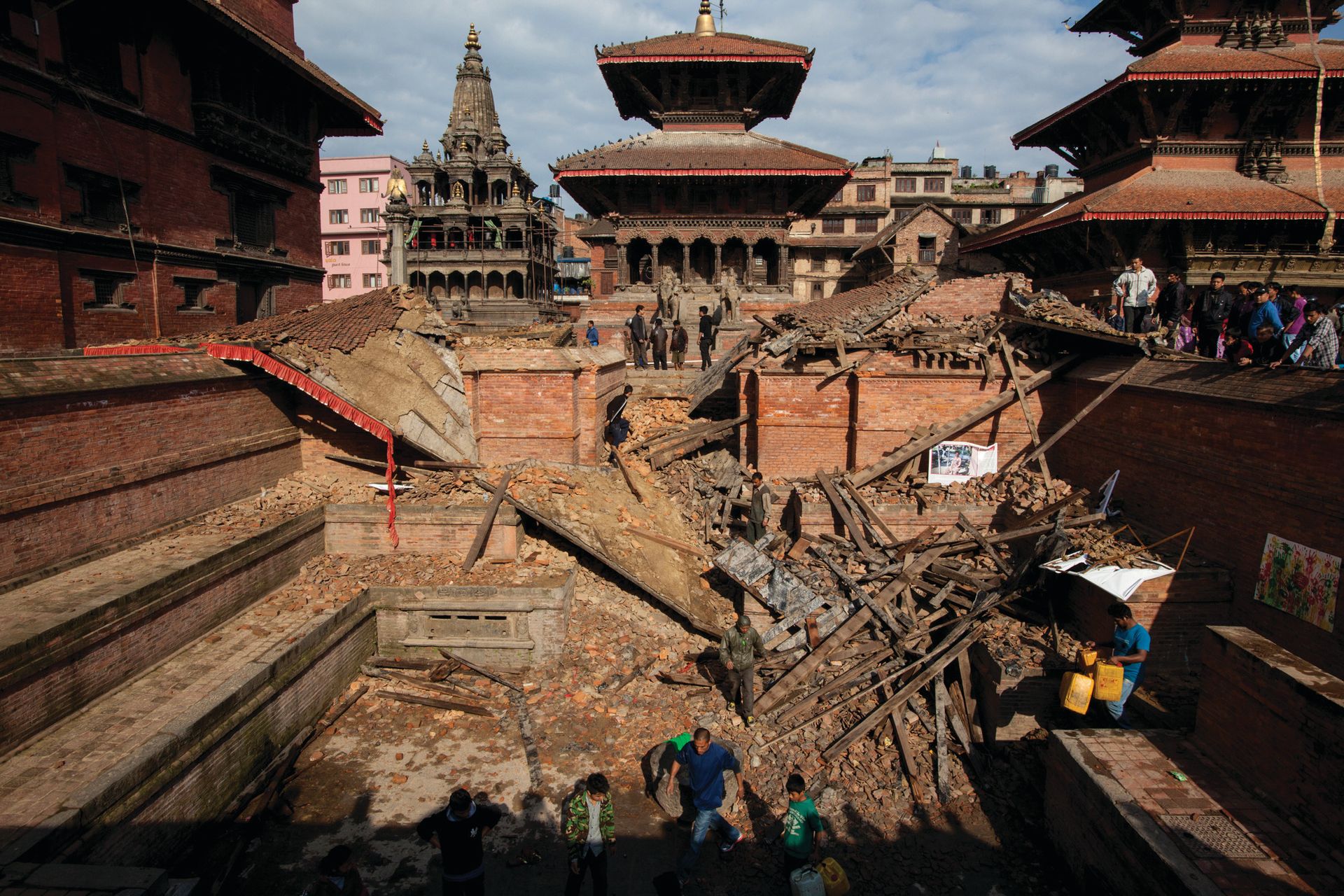Sushil Koirala, the prime minister of Nepal, is appealing to aid organisations and the international community for $2bn to help rebuild after two major earthquakes rocked the small Himalayan nation on 25 April and 12 May. The number of dead had reached 8,583 as we went to press, making it the country’s deadliest disaster on record. As well as the catastrophic loss of life, early assessments suggest that at least 68 heritage sites were damaged, although some reports suggest that the figure is much higher. In the Kathmandu Valley alone, there are seven Unesco World Heritage Sites, all severely damaged, Christian Manhart, the head of Unesco’s office in Kathmandu, told the German broadcaster Deutsche Welle.

Unesco’s preliminary assessment, published on 27 April (two days after the 7.8-magnitude quake), reported that three World Heritage Sites—the Durbar Squares of Kathmandu, Patan and Bhaktapur—were “almost fully destroyed”. These royal squares, made up of palaces, temples and courtyards, were the religious and administrative centres of three kingdoms that were united in the mid-18th century. Many of these buildings, made from brick, wood and stone, were built between the 12th and 18th centuries. They represent the height of art and craftsmanship of the period, says Bryony Whitmarsh, a senior lecturer in the University of Portsmouth’s architecture school and a doctoral student at SOAS, University of London.
The 1830s Dharahara Tower, a nine-storey structure famous for its views of the Kathmandu Valley, collapsed, killing and trapping hundreds of people. The popular tourist attraction was rebuilt after the country’s last major earthquake in 1934. There are reports of damage to one of the oldest Hindu temples in Nepal, Changu Narayan, which dates back to the third century. The 150-year-old Swayambhunath temple complex, also known as the Monkey Temple because of the holy monkeys that live there, has also been damaged. Although its famous gold central stupa (shrine) featuring the eyes of Buddha is still standing, other buildings and stupas at the site have been damaged.
Looting has become a major concern and Unesco and the Kathmandu Valley Preservation Trust are working with local authorities to record and secure objects recovered from the rubble.

Fabric of the city
“It might seem inappropriate to worry about the destruction of historic monuments when thousands of people have died, but in the case of Nepal, this is an incredibly significant part of their loss,” Whitmarsh says. “These palace and temple complexes form the heart and soul of the country’s identity. They’re lived-in and loved spaces, and it’s shocking to see them flattened.
“People meet in these historic squares and sit on the temples’ steps to talk; they pray here. It’s where the children eat their ice creams,” she says. “They’ve become the very fabric of the city,” says Samrat Upadhyay, a Nepali-born professor of humanities at Indiana University, Bloomington, who brings groups of students to Nepal every year.
The Nepali have a strong connection with their architectural heritage, which is a mix of Buddhist and Hindu influences. It is continually in use and has been built and rebuilt over centuries, creating what Whitmarsh describes as a “palimpsest of different layers”. The importance of these sites lies in not just their age, “but the continuity of culture represented in them”, says Lisa Ackerman, the executive vice-president of the World Monuments Fund.

A matter of pride
“Unfortunately, an earthquake of this magnitude doesn’t discriminate,” Ackerman says. She notes that, although the media have largely focused on historic and religious buildings, all types of structures, including businesses and homes, were destroyed. The cumulative effect of the damage means that no one single type of building can be singled out for repair and rebuilding.
Reconstruction is a priority for the prime minister because Nepal is dependent on tourism: the sector contributed 8.9% to its GDP in 2014, according to figures compiled by the World Travel and Tourism Council. Many remain confident that Koirala’s pledge to rebuild will be fulfilled. “For the Nepali, their heritage is a matter of pride, so they will rebuild,” Upadhyay says.
Ackerman stresses that the number of people killed is almost unimaginable and that no historic site is ever as valuable as human life, but says it is disasters such as this that make us realise how fragile the world can be. “As a global community, I think we have come to realise more and more that there are places that give us comfort and contribute to local and national identity. Once humanitarian aid is in place, we understand why rebuilding efforts must include the repair and restoration of historic structures,” she says.

